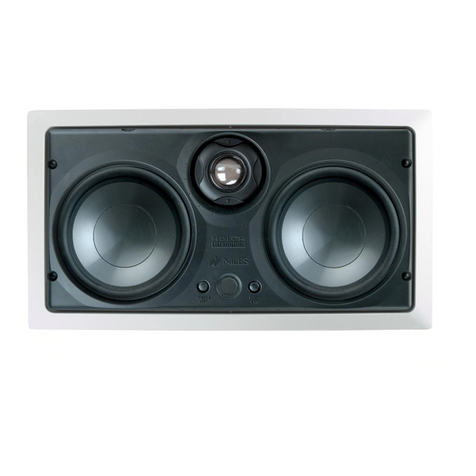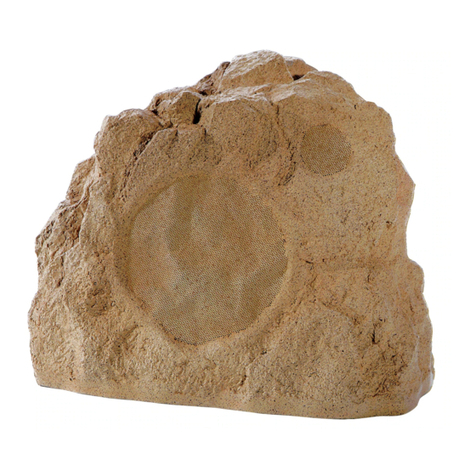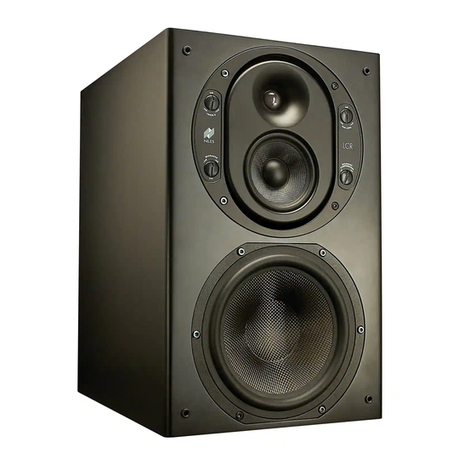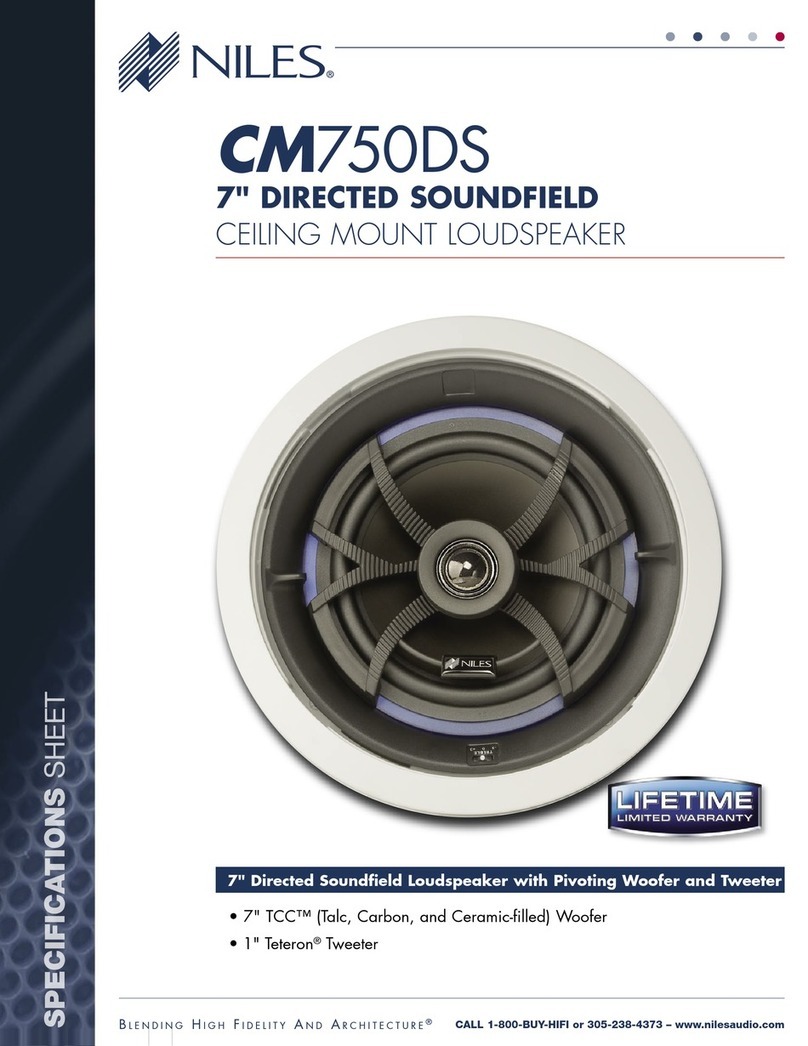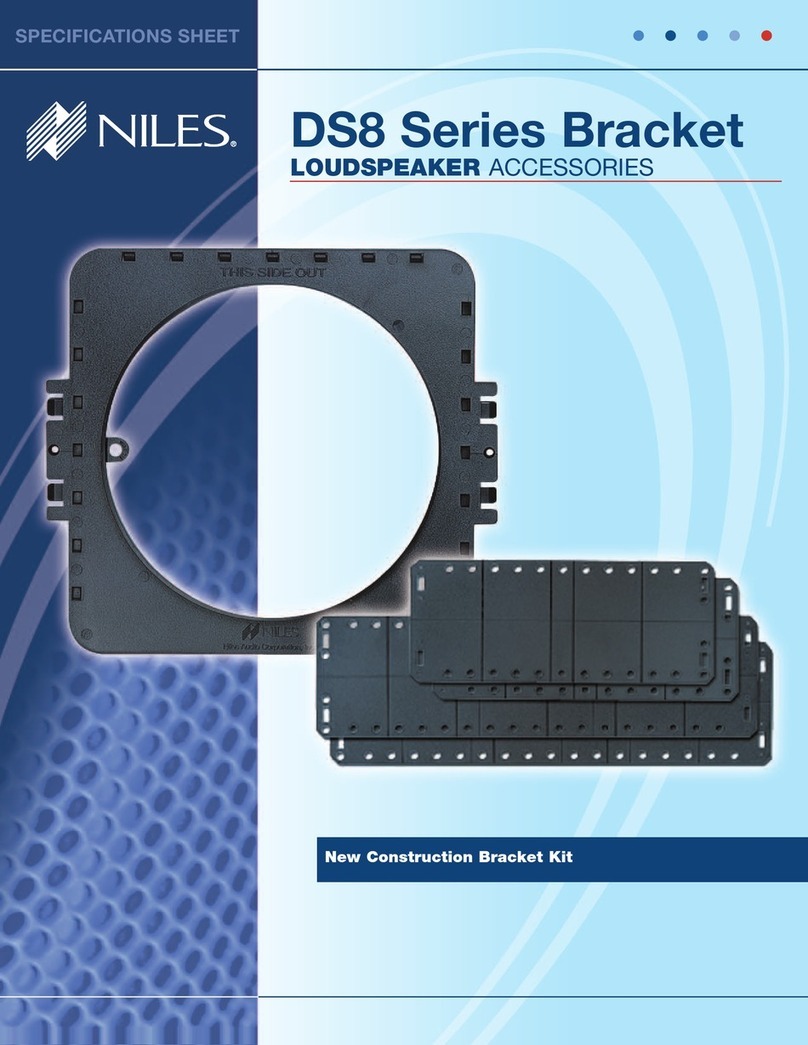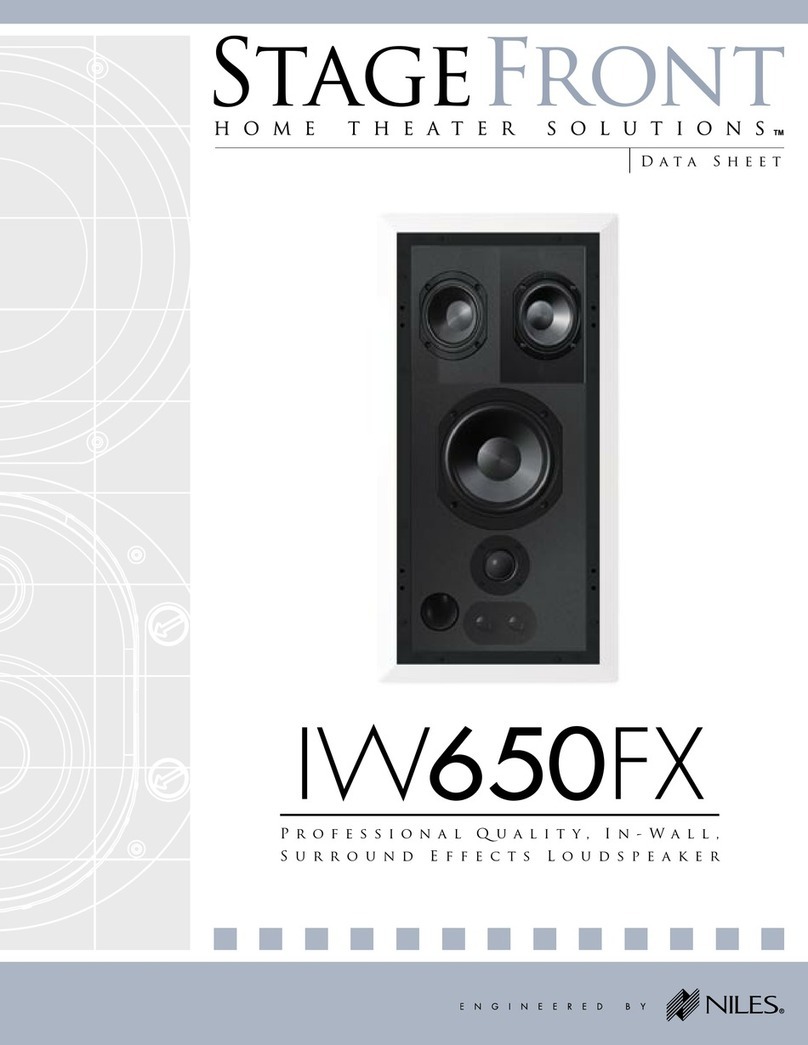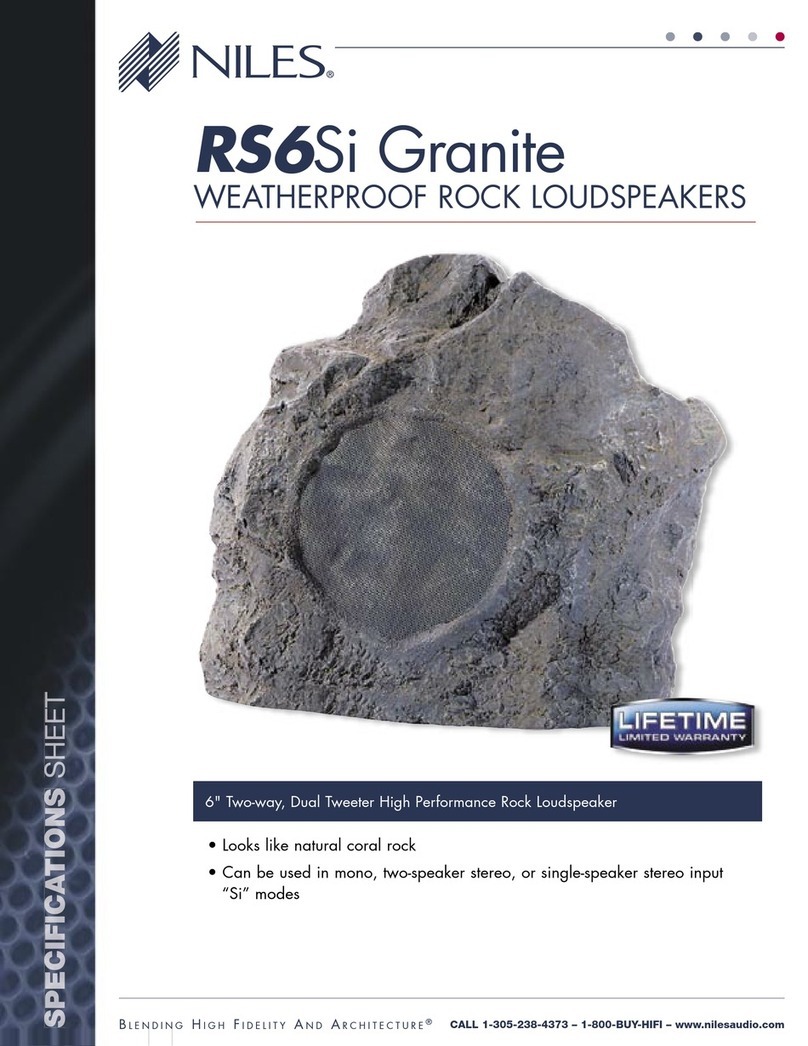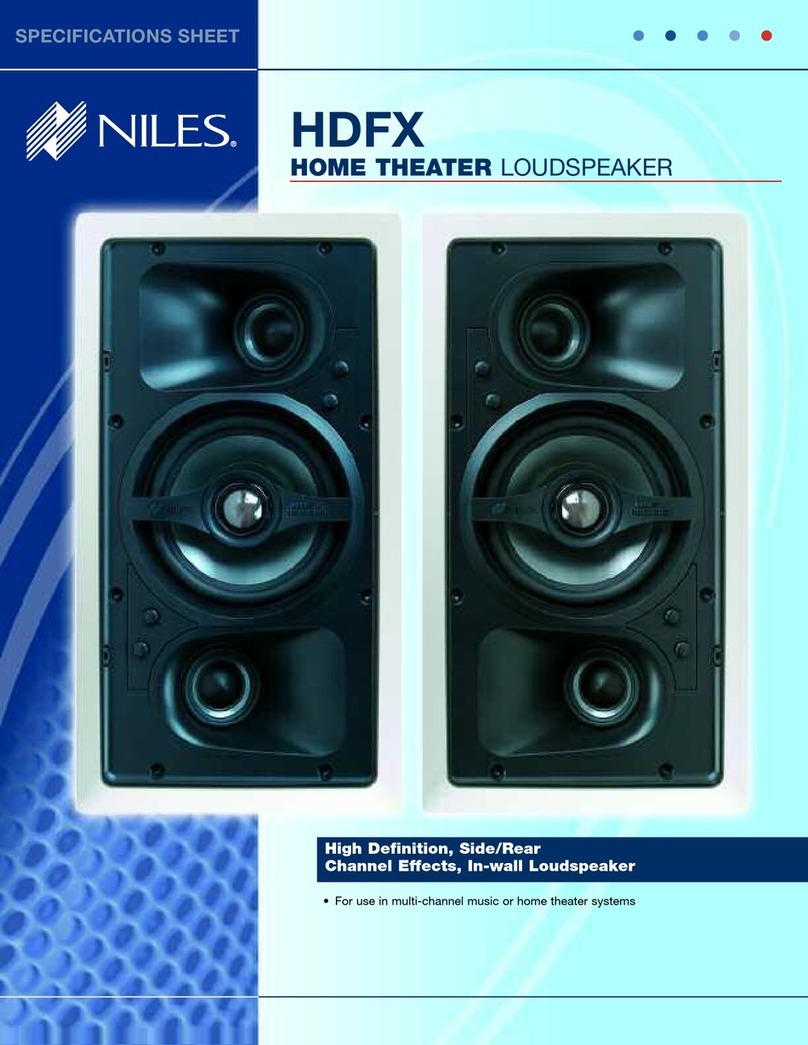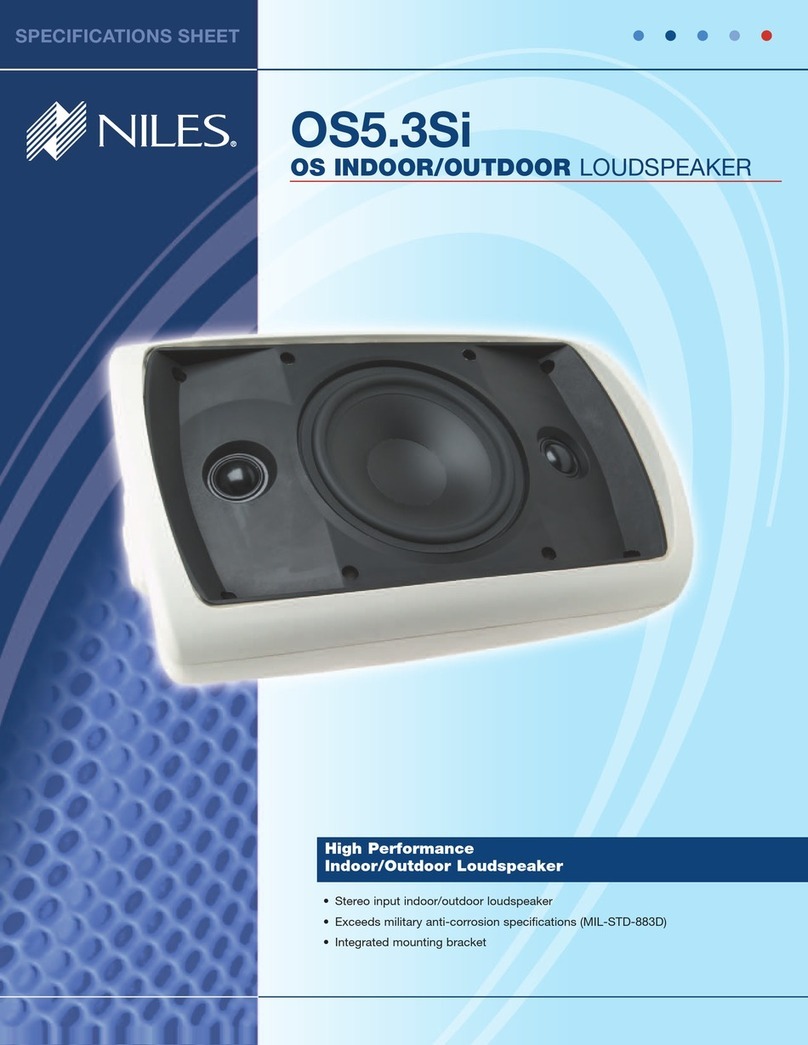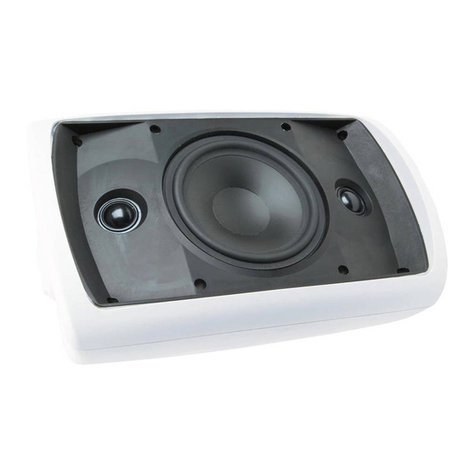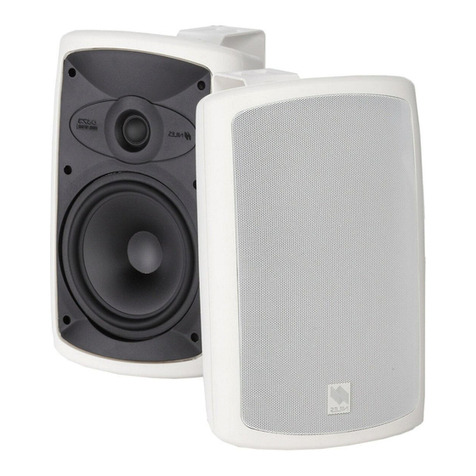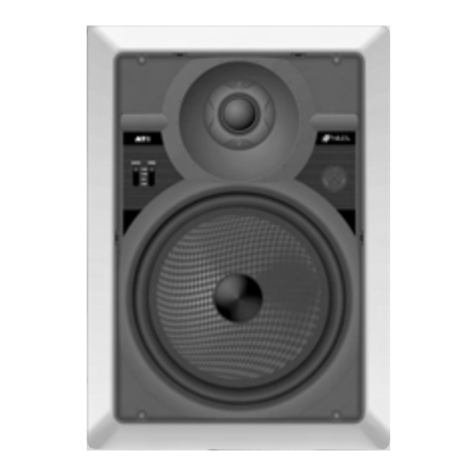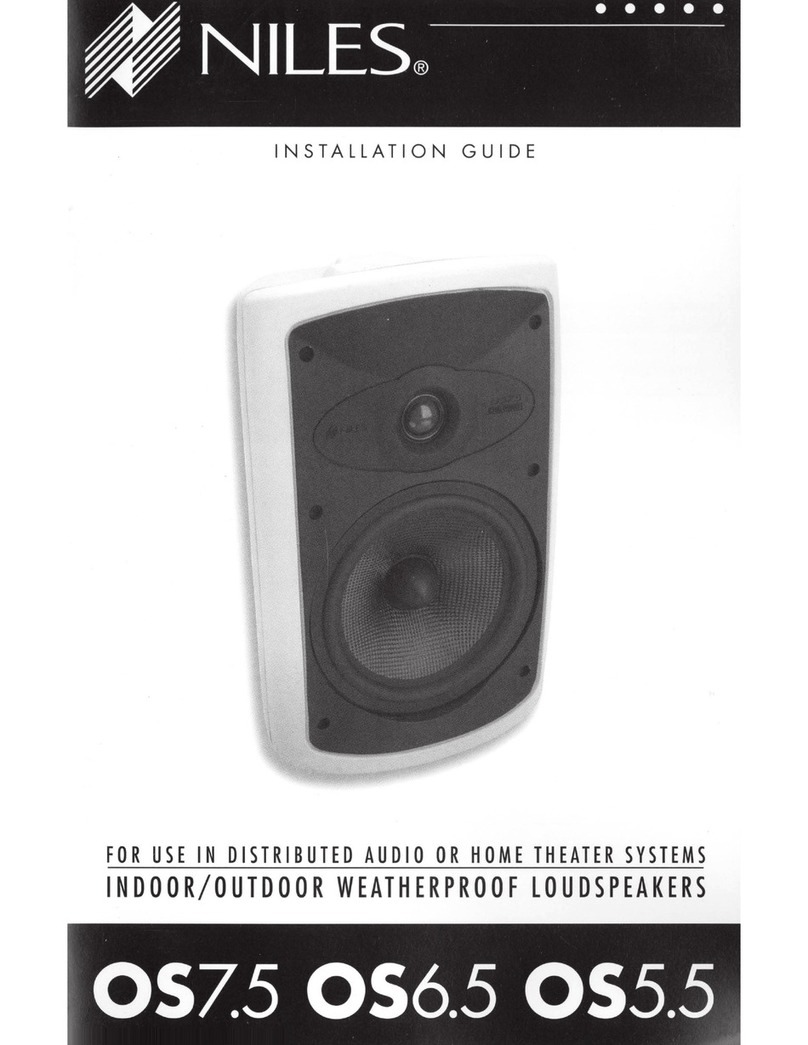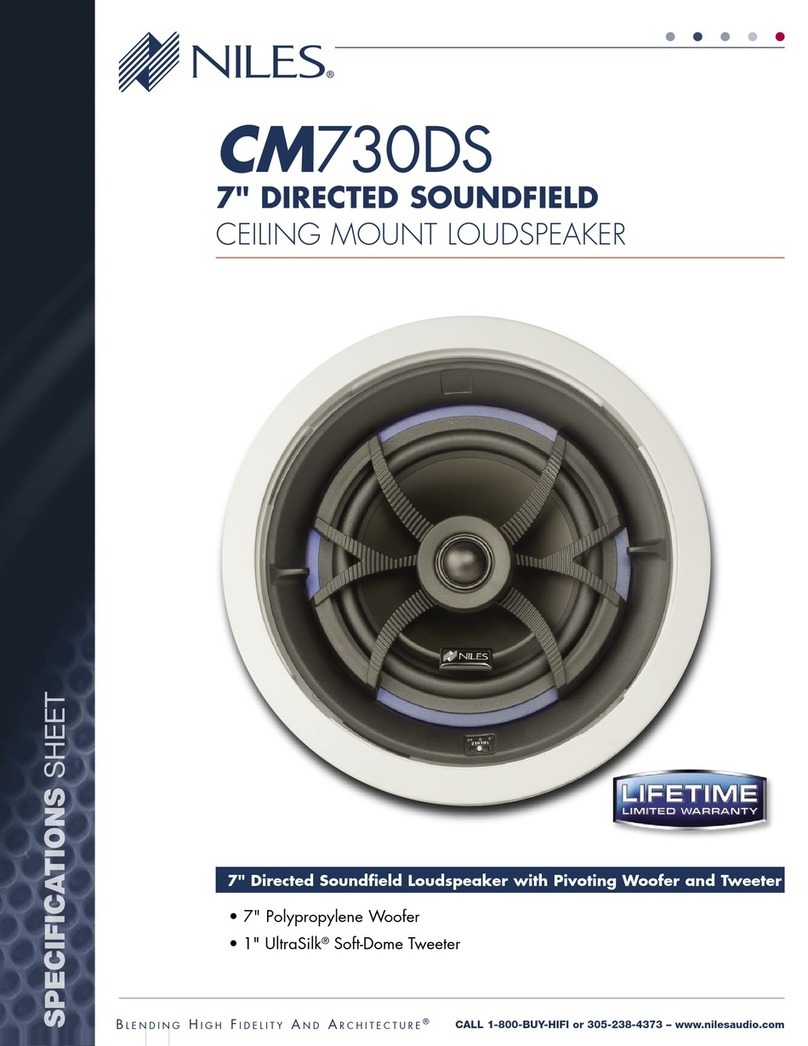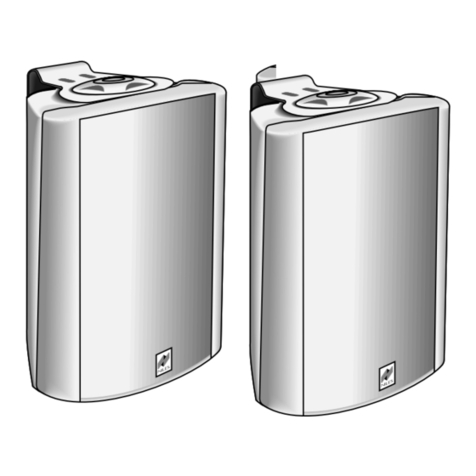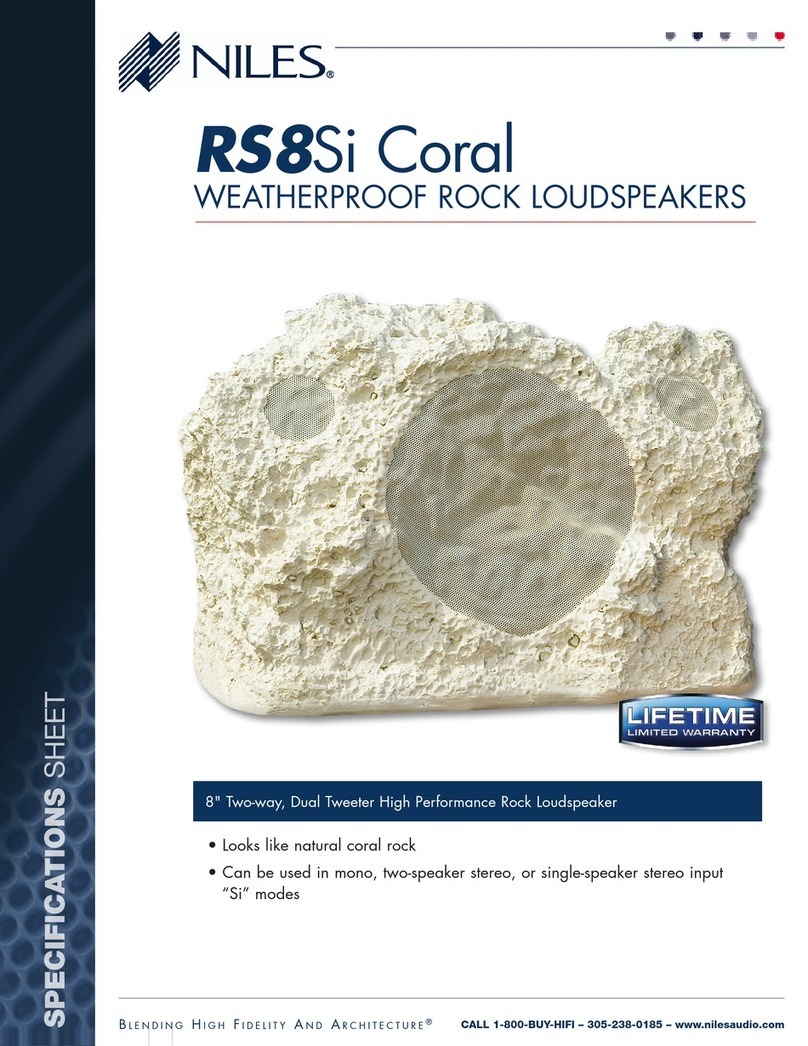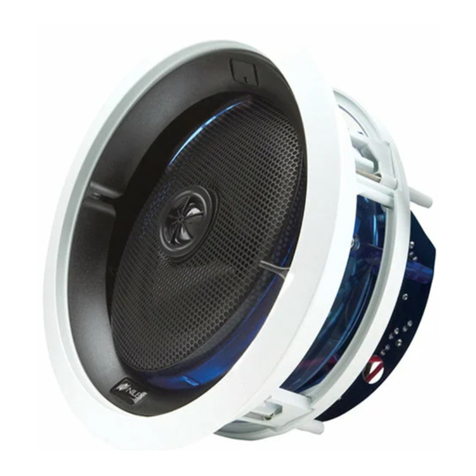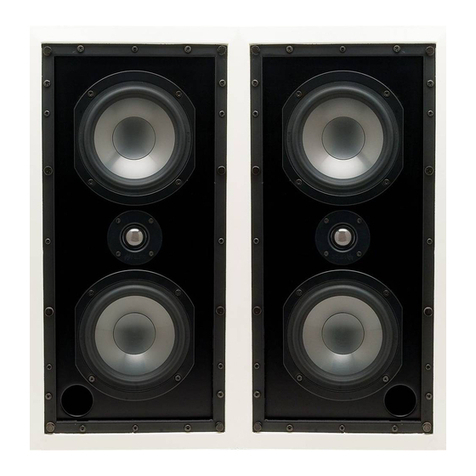Speaker Orientation for Directed
Sound Field Geometry™
The Directed Sound Field Geometry
(DSFG) provides optimum off axis phase
and frequency response due to the
acoustic interaction between the woofers
and the tweeter. The flattest response will
be obtained approximately 15 degrees off
axis in the direction opposite the tweeter.
Therefore, the orientation of the speaker is
important for optimum performance. For
an HD•CTRBX placed above a TV, install
the speaker with the tweeter up. For an
HD•CTRBX placed below a TV, install the
speaker with the tweeter down. For
HD•LRS’s placed in the front, install the
speakers with the tweeters facing out.
Acoustic Fine Tuning
The rear-mounted switches on the
HD•CTRBX enable the speaker to be opti-
mized regardless of positioning or room
acoustics by providing 3dB of Treble Cut
and 3dB of Dialog Enhancement.
(See Figure 8). Start by listening to the
speaker with the Treble Cut switch in the
“Flat” position. If the sound seems to have
too much treble move the switch to the
“-3dB” position. Next, listen to the speaker
with the Dialog Enhance switch in the
“Normal” position. If you desire to make
the dialog in a movie more pronounced
move the Dialog Enhance switch to the
“Enhanced” position.
Defeating DSFG
A switch on the rear panel of the
HD•CTRBX enables you to defeat the
Directed Sound Field Geometry (DSFG)
feature. This is useful when the speaker is
mounted at ear level directly in front of
the primary listening position as would be
the case when the speaker is mounted
behind a perforated screen. To eliminate
the DSFG feature simply set the DSFG
switch to the “Defeat” position.
Speaker Phase
Speaker wire has two conductors. One
conductor is attached to the negative (-)
terminals and one conductor is attached to
the positive (+) terminals of both your
speaker and your amplifier. Usually, the
wire is marked for your convenience.
There are different ways wires are marked:
a stripe on one wire, a ribbed area of one
conductor you can only feel, different col-
ors of metal wire on each conductor, or
there might be a fabric strand or string
wound into one of the conductors. Of
course, there are some wires which appear
completely identical. Be careful, or you
might make a mistake.
If you make a mistake, one speaker will be
playing “out-of-phase” with the other
speaker. An out-of-phase pair of speakers
work against each other and the sound of
the two speakers playing together will be
lacking in bass and be “phasey” sounding.
If you suspect the sound is not right and
you cannot see any markings on the wire,
try this simple test:
1. Connect the HD•CTRBX to your amplifi-
er’s center channel output.
2. Play some music in Prologic or Dolby
Digital surround mode.
3. Listen to the richness of the bass and the
loudness of the sound coming from the
center channel.
4. Turn off the amplifier and reverse the
connections.
5. Repeat the listening test with the same
setting of the volume control. When the
sound has a richer bass and is slightly
louder, the center channel speaker’s polar-
ity is set correctly.
8
Speaker Pla ement

